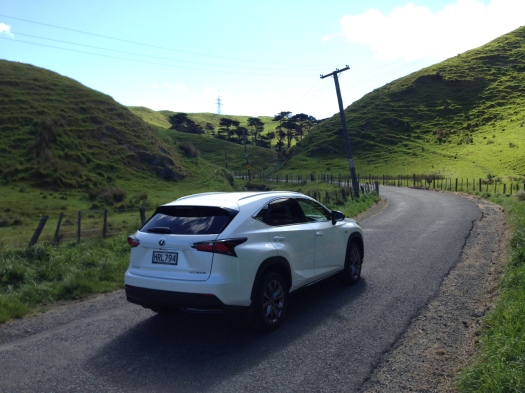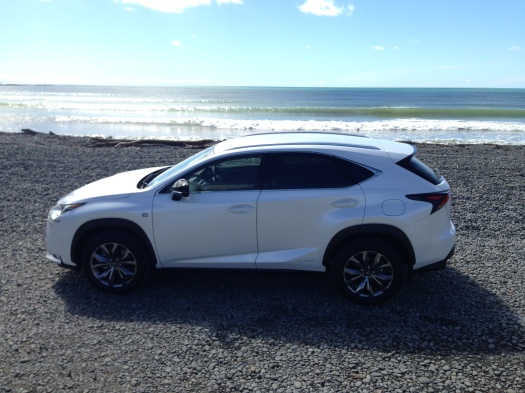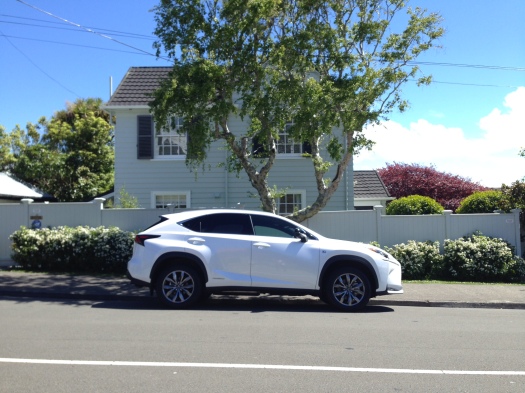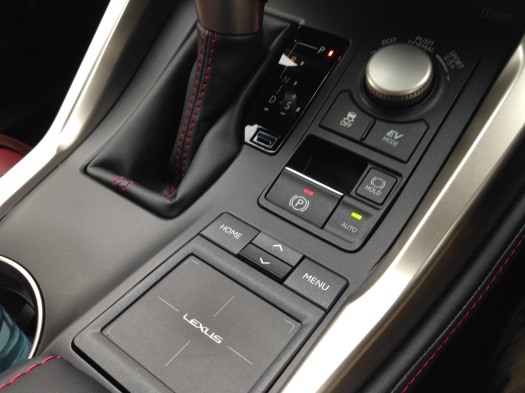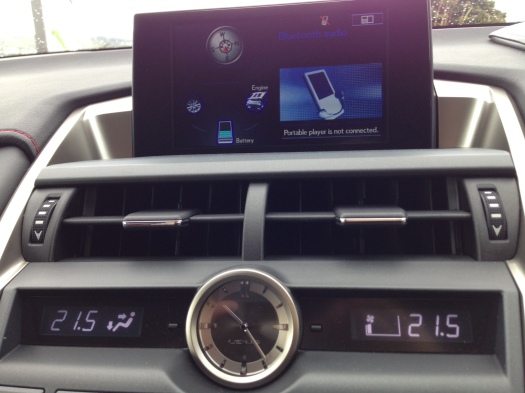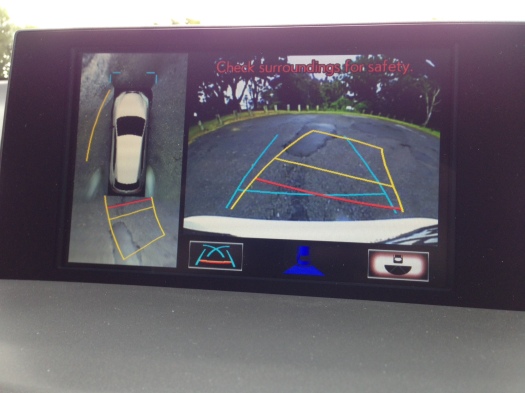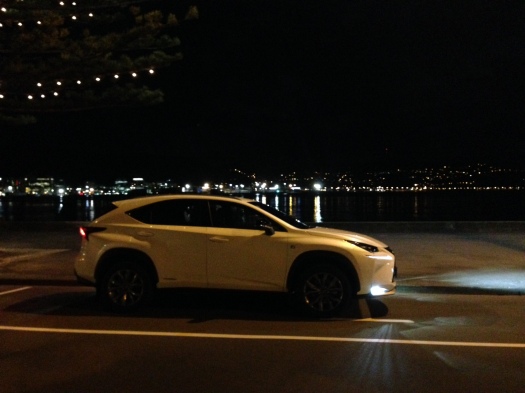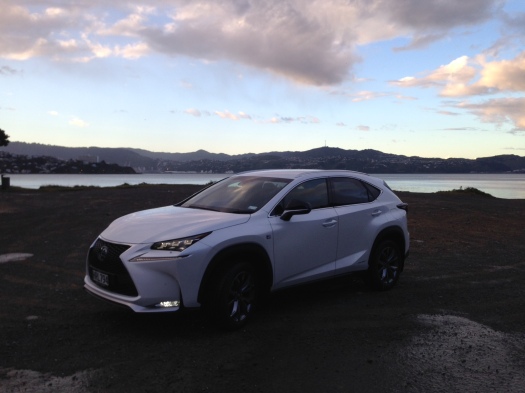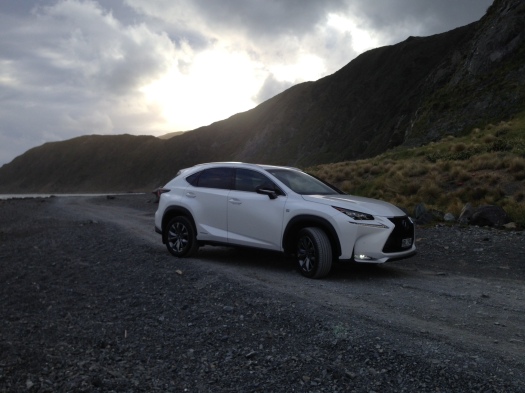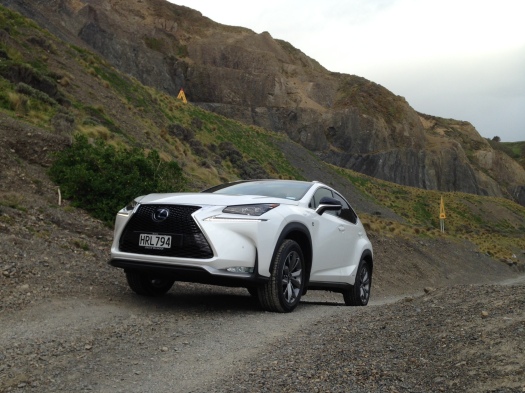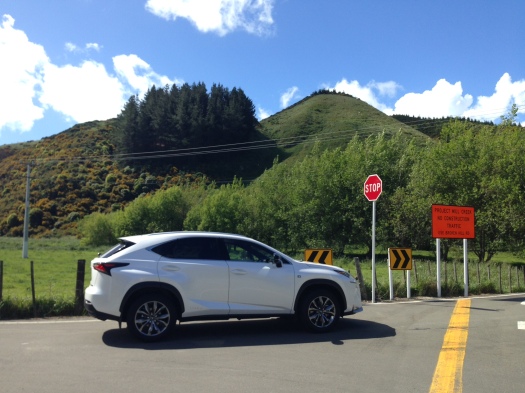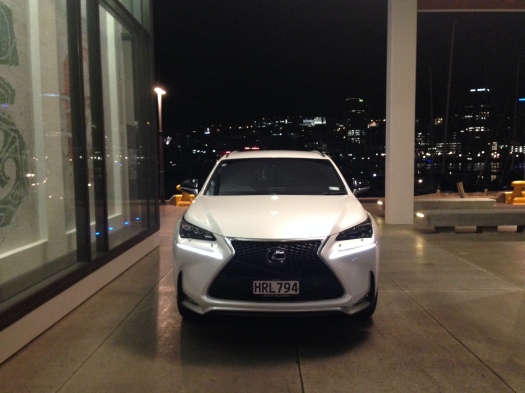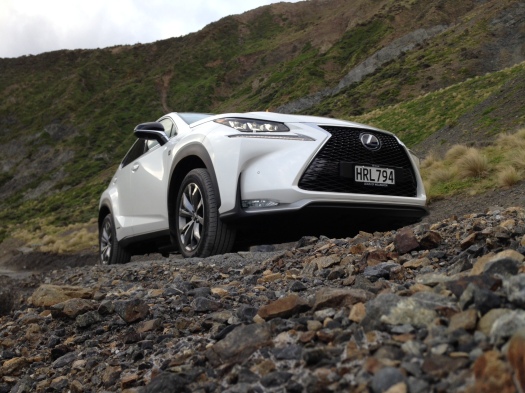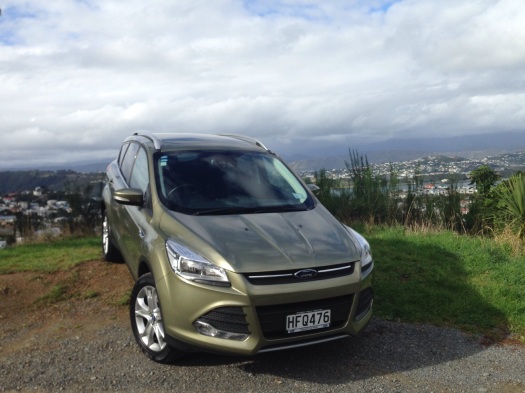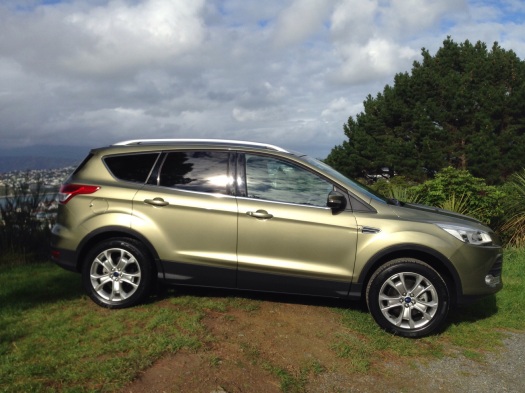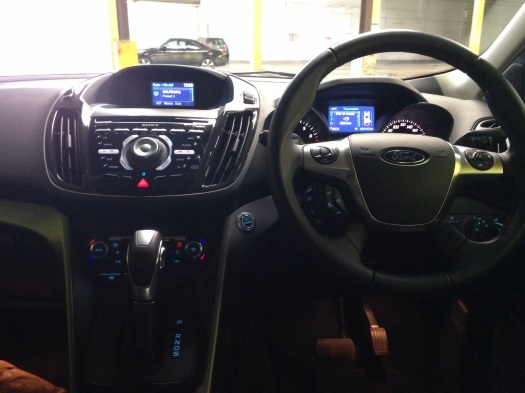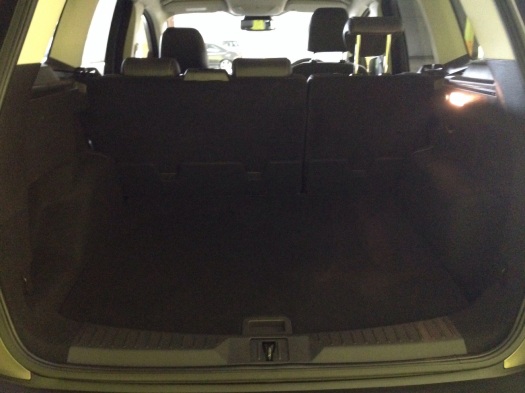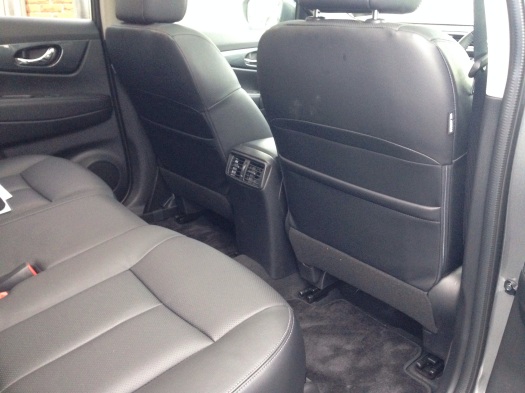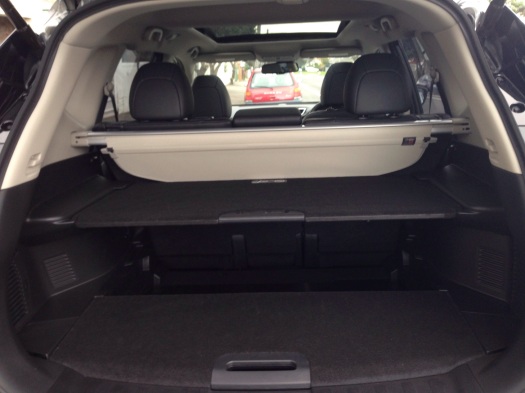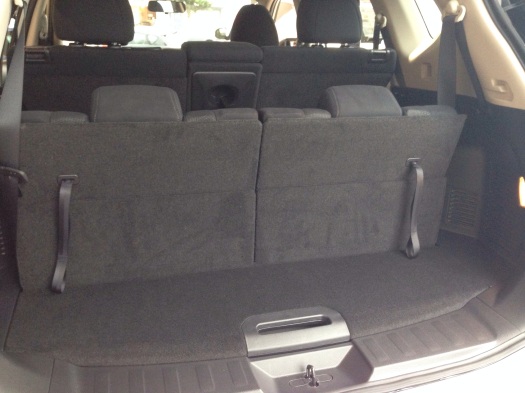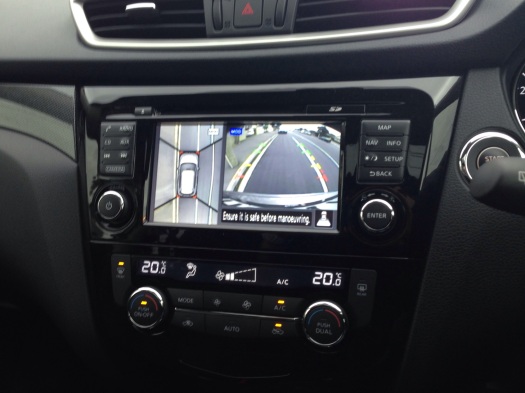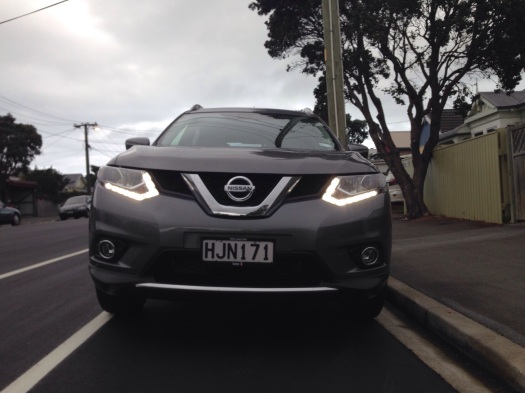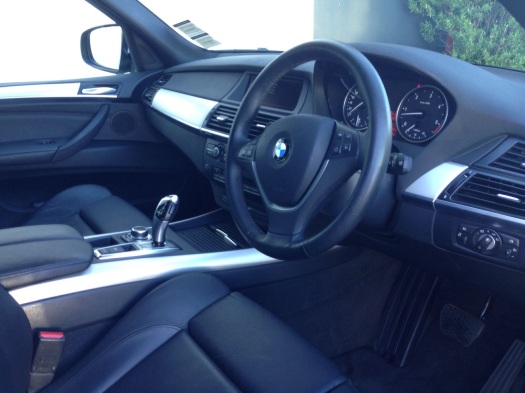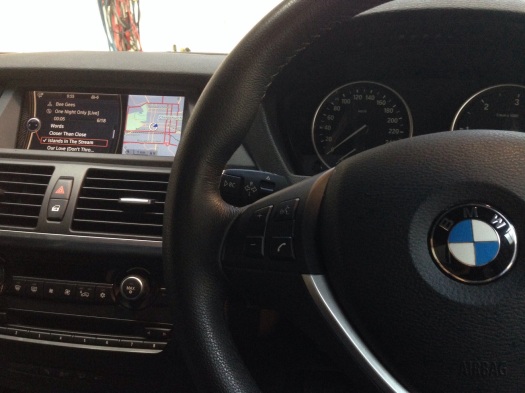2014 Lexus NX300h AWD review
The Japanese have always had a knack for doing things that have been done many times over but in their own special and unique way. From the first Sony Walkman to robotics, the Japanese aren’t afraid to venture out with whacky ideas. Who would’ve though a sport where two fat men charge at each other could be so entertaining and exhilarating? And queueing for a train is one of the most extraordinary experiences I’ve had in my life. Everyone stands and waits accordingly for a train that’s always on time.
I love the way the Japanese do things. It’s always so efficient, well executed, and every now and then a bit mad. Take Lexus’ new design language as an example of this. You have to applaud the balls of Lexus’ design team for their current cars. The bold, edgy, and aggressive look is a far cry from Lexus’ of old and was sure to split opinion. That was the point. It was a risk to lure new customers in to the brand but also to keep the current fan base coming back for more. While I can’t speak for all Lexus owners, I can safely say I’m one of the converted. I absolute adore this design language. In my opinion the three best looking sedans on sale at the moment are the Maserati Ghibli, Aston Martin Rapide, and the Lexus IS F-Sport.


It’s such a wild departure from what Lexus used to be 20, or even 10 years ago and a two-finger salute to the conservative Germans. That’s probably what I admire most about this design language. The moment you see one of the new Lexus on the road you immediately know what it is. Which is funny as you can’t really say that about the Germans these days. Finding the difference between an Audi, BMW, VW, or Mercedes is as easy as finding the difference between German towns. In a way that’s quite ironic as Lexus was always thought of unashamedly copying the Germans but now it seems they’ve found their identity whereas the Germans are losing theirs.


That brings me on to the all-new Lexus NX. And I do mean all-new. This is one of the rare instances where I get to sample an all-new car and not a follow up to a previous model. The NX is Lexus’ first foray into this segment. Previously the least expensive way of Lexus SUV ownership was via the RX which competes in the segment above. But Lexus has seen how this end of the market has grown and have waded into battle against the likes of the BMW X3, Audi Q5, Porsche Macan, Volvo XC60, and Range Rover Evoque. Mercedes’ GLK isn’t available in right-hand drive and the GLC replacement is still a year or so away. So the NX is in the company of some very well established and very German rivals, with the exception of the Swedish XC60 and British Evoque.
With the Evoque and arguably the Macan aside, most of the cars in this segment are conservatively designed and look quite similar to one another. That’s where the NX comes in with its trump card – its bold styling. Where the others look like they’ve been formed out of a slab of granite, the Lexus looks like it’s actually been styled. Some call it fussy, I say someone has taken the time to put some effort into making it stand out from the crowd. Beautiful isn’t a word I’d use to describe it but there’s something about it that really appeals to me. It’s a great combination of aggressive looks, athletic details, and just an all round cool looking thing. I’m not alone on this, driving around Central Wellington this thing turns more heads than an anti-government protest. One chap even said it looked like a concept car that’s driven straight from a motor show.
This test car is equipped with the F-Sport pack and brings with it more aggressive styling. The F-Sport NX probably has the biggest spindle grille of any Lexus and that’s the first thing you notice as you see it from the front. That and those futuristic headlights. Three LEDs are housed in each headlight and give a moonlight-like effect as they illuminate the road at night. As with the IS and RC, the daytime running lights are separated from the headlights. They’re the same exaggerated ‘L’ shape and I still maintain they’re one of the better looking DRL designs. One of my favourite design details is the pointy bit of the front bumper that connects the DRLs to the fog lights.
Round the side the NX has a similar profile the RX, albeit slightly shorter. There’s so much about this car’s exterior styling I like and could talk about. The diamond-like look of the sills to the squared off design above the rear wheel arches. I even like the shape of the windows purely because they’re not German-like. The rear is more often than not the part of a car’s design that’s forgotten. Many rear-ends look like an afterthought. Not so in the case of the NX where the wild creased, edges, and ‘L’ theme continues. The taillights aren’t as extreme as the those on the IS but they do have the same L graphics and I like those it sort of cuts through the lighting cluster.
Suffice to say I’m a fan of the exterior, and it’s the same story inside. The moment you open the door you instantly know this is a quality car. At night the door handles illuminate and they also have the same slide-to-lock function as the IS. Climb inside into one of the most welcoming seats in any car, the door closes with a nice reassuring thump. Unlike its rivals that have go for a minimalist interior with touchscreens and rotary dials to control everything, Lexus has chosen to go down the shock-and-awe route. It’s not a bad thing in particular, it’s just a bit overwhelming at first. Luckily you get used to where everything is and it all become second nature. Even if I hadn’t driven an IS350 prior to the NX I still think I would’ve found where everything was blindfolded. But then if I were blind folded I wouldn’t be able to appreciate the design of the dash.


Layers, layers, and more layers. That’s probably the best way to describe the styling of the dashboard. The great philosophical figure that is Shrek once said “Ogres are like onions, they have layers”. Well perhaps if Shrek had been familiar with a Lexus NX he would’ve said Orgres are like the dashboard of a Lexus NX. You have top dash but which goes down to a stand-alone screen (possibly the most German looking thing of the NX). From there the centre console extends out with the air condition vents, analogue clock, and climate control buttons. It then goes back in where the CD autochanger and media buttons are. Then it slopes outwards for the driving mode controls, gearstick, and cupholders on the transmission tunnel. You don’t get this kind of complexity from its rivals that’s for sure. It may sound overly complex but it’s surprisingly comfortable and it means you’re never bored sitting inside the NX.
There are two kinds of interiors; one where you sit in it and are comfortable or one where you sit in it and it makes you feel special. The NX’s falls under the latter. Being inside the NX is a fantastic experience. From the design to the sheer quality of everything you touch, it never stopped making me feel like I was in something a bit different. Lexus, whether you like them or not, you can’t argue that they know how make cars of top-class quality. First the materials. If it’s not trimmed in soft leather, it’s soft touch materials. It’s as if the designers scoured the world in search of the most worthy materials to use in here. Why can’t more manufacturers take the time and effort to make cars as well as Lexus? All the controls; the stalks, buttons, and even the touchpad have an expensive feel to them. They’re amazingly damped. Sure there’s a lot of buttons but pushing them is so satisfying I don’t even care.
It’s all about the small details. Take how the cupholders grip your drink so no matter the size you’ll never arrive with a wet crotch. Or the fact that everything that opens always closes in the softest and quietest manner. Even something as ordinary as turning on the interior lights becomes an event. You don’t simply push them but rather swiping them with your fingers to turn them on and off. Brilliant. Oh and I mustn’t forget to mention the random handheld mirror found on the centre console. I have no idea what purpose that serves other than being a fantastic selling point to soccer mums. Again, it’s just one of those things where Lexus do things a bit differently to its main rivals. It’s the same with the tech on board too. Oooh there’s a lot of tech on board. The NX is the first car to come with a wireless charging tray for your Qi compatible smartphone. Unfortunately my iPhone 5 wasn’t compatible. I tried using an HTC One and Samsung Galaxy S4 but with no success either. I later found out you need a special case in order for it to work. Disappointed I didn’t get to use but it’s a great idea and feature. It also means less cables and somewhere to keep your phone hidden.
Where Audi, BMW, and Mercedes have central infotainment system controlled via rotary dial and/or touchpad, the Lexus only use a touchpad. It replaces the old mouse-like controller is a vast improvement in terms of usability and reducing driver distraction. Using it is as easy to use as a touchpad on a laptop. Swiping your finger up, down, and across to get around the various menus and then pressing down to select. There are quick jump buttons located above the touchpad for easier access. Home directs you to a split screen showing energy information and audio. Menu displays Climate, Nav, Media, Radio, Lexus Enform, Info, Vehicle settings, etc. It’s very intuitive to use and doesn’t require your eyes to stray from the road ahead too often once you’ve gotten used to it. However, I don’t think it’s any better or worse than what the Germans use. Just a nice change though.
The screen is brilliant. It’s wide and has great resolution. The information displayed is just enough and isn’t crammed in or crowded. Things are easy to read thanks to simple fonts and good sizing. The sat-nav in particular is great and easy to use. Inputing destinations can literally be done in a matter of seconds. But what I want to talk about is the reversing camera. It’s not the clearest in the world but the 360° view camera is great. What’s even better is you can select different angles to from the top view, side view, and rear view. That not only makes parking easy but it also feels like you’re directing a film. Equally cool is the semi-virtual instrument display. It’s not quite as extreme as the one on the Lexus IS, or LFA for that matter, but it’s still a pretty cool touch. The speedo on the right stays the same, however the dial on the left changes depending on the drive mode you’ve selected. In EV or Normal mode the left dial is a Charge, Eco, Power dial and in Sport or Sport+ it’s a rev counter.
Getting comfy inside is easy, the adjustable electric front seats provides drivers of different shapes and sizes a driving position that’ll be comfortable for them. The optional F-Sport seats are a particular highlight of the interior. They’re some of the most comfortable and supportive seats I’ve ever come across. They offer the perfect balance of being plush and luxurious while hugging you tight and keeping you upright as you drive around twisty corners. In fact I’d go as far as to say they’re some of the best in the business. And the leather is of such great quality too. Smelling and feeling the leather is an experience in itself. Of course, this being a Lexus, the seats are heated and cooled. I must say, they work very well and have almost immediate reactions.
The rear seats are also pretty damn comfortable. Like others in this class they recline back but what makes them even better is the way you just sort of fall into a daze. They welcome you like your bed after a day’s work. To further enhance the business class feel there’s literally acres of legroom. It’s bettered by a missing intrusive transmission tunnel so even the middle occupant can be comfortable. The reason for the lack of a transmission tunnel is because the rear axle is powered by electric motors. This affects boot space a bit, the NX300h having a 475L capacity whereas the electric motor-less NX200t has 500L.
Good thing the interior is so stylish and nice to be in because the NX comes with so much equipment as standard. There’s actually so much kit fitted it’d take me all of eternity to list them all. But some the highlights are the 14 speaker Mark Levinson sound system. No idea who Mark Levinson is but he can make some damn good speakers. Then there’s all the tech on board as mentioned before such as a heads up display, Qi wireless charger, and electrically operated seats trimmed in the finest leather. The NX300h also comes with keyless entry and go (with slide to lock door handles, oh and they illuminate at night too), an electric tailgate, and front and rear parking sensors with all round cameras. The amount of safety kit is befitting of a car scoring 5 stars in the EuroNCAP crash tests. There’s adaptive radar cruise control, lane keep assist, blind spot assit, rear cross traffic alert, pre-crash brake assist, and all the other safety acronyms.
The NX will be available with two models. The NX200t is Lexus’ first turbocharged petrol engine since the 1990s and it’s an engine that will find its way to other Lexus models. That won’t be available in NZ until early next year. For the moment only the NX300h petrol-hybrid is available. There won’t be a diesel version so as far as economy goes this is the only choice. Lexus claims an average fuel economy of 5.4L/100km. I got around 7.7L/100km but if you’re careful then you could get close to the claimed fuel figure. Hybrids tend to be easier to get close to the manufacturer’s claimed figures than other cars. Utilising a 2.5-litre four-cylinder engine and an electric motor, the NX300h has a combined output of 197bhp and 210NM of torque. Far from being the sportiest of SUVs, it goes from 0-100 km/h in 9 seconds. It feels it. It’s aggressive and sporty demeanour on the outside may suggest a take-it-by-the-scruff-of-the-neck beast but in reality it’s from being a Porsche Macan rival.
Let’s be honest though, most buyers of these sorts of cars aren’t wanting hot hatch levels of driving involvement. Approach the NX with this in mind and you won’t be disappointed. Otherwise you might find the F-Sport pack is writing cheques the drivetrain can’t pay. It’s not hideously slow, there are moments where the instant torque from the electric motors gets the NX going but it just doesn’t feel like it wants to be going around in a rush. Rather, it’s as if it’d rather cruise and enjoy the journey to your destination rather than get there in the fastest time. That makes it different to the Germans you see. In those cars you feel like you need to drive as if every road you’re on is an autobahn. In the Lexus you’re more relaxed, you’re heart doesn’t beat as fast and you can bask in the knowledge that you can put it in EV mode and drive around in a $100k SUV emitting zero emissions. Shove that up your pipe and smoke it Greenpeace!
As hybrids go though, the NX is one of the best I’ve driven. Actually scratch that, it is the best I’ve driven. Toyota and Lexus know a thing or two about them, given they invented the damn things. The default setting for the NX after starting it up is it’ll be powered by the electric motors alone. You can select it to run purely in EV mode but only up to speeds of 40 km/h and given you’re not too heavy with your right foot. I do enjoy the idea of driving around the city in pure silence and using no fuel. The batteries for the electric motors recharge as you drive along and also recuperate energy from braking and downhill driving. With this, the NX300h makes a lot of sense if you primarily do urban driving. And let’s not kid ourselves here, that’s where these types of cars spend most of their time. Should you require extra oomph the petrol engine kicks in with the smoothest transition of any hybrid I’ve experienced. It’s a great powertrain and there’s more than enough grunt to suit city and motorway driving. It’s only on twisty hill roads does the idea of an NX200t become slightly more tempting.
Letting its sporty side down is the CVT auto. Again, in town or on the motorway it’s perfectly fine. I couldn’t fault it. Other reviewers have complained about a ‘droning’ noise from the CVT. I couldn’t pick up on the noise. The car I reviewed last week, now that thing droned like there was no tomorrow so compared to that the refined Lexus was a huge improvement. No, it’s not the drone (or lack of it) that was the problem bur rather it couldn’t get the right ‘gears’ I wanted. Sure, a CVT doesn’t have traditional gears but even in Sports mode and via the paddles it didn’t have the same responsiveness as the sportier Macan. That said, in town or on motorways the CVT works like a charm seamlessly shifting gears to get the most out of the economical hybrid powertrain.
Handling-wise the NX isn’t all that brilliant either. The light steering (if a bit lifeless) and tight turning circle make it great in the city and car parks but it doesn’t make for an all too sporty drive. This is possibly where Lexus could learn a thing or two from the Germans. Around corners the NX does lean a bit, but not too much that it’s uncomfortable. It’s just something expected for a car of this type. However, I was surprised at the amount of lean it had as it was sitting on F-Sport suspension which were a tad firm. Personally I don’t mind a firm ride as long as the seats are comfortable like they are in the NX. However, I could imagine a few people finding it edging a bit on the firm side for their liking. Simple solution to this is to just get the standard NX or the comfort-biased Limited.
So we’ve established it’s no back road blaster but as a cruiser it’s hard to beat. NVH levels are virtually non-existent. The near silent hybrid powertrain continues even as you get to motorway speeds. There is slight wind and road noise but barely much to make it a nuisance on long distance driving. The driver’s seats, as mentioned before, are very comfortable and supportive. At no point did my back or bum ache at all. Visibility is good too, the wing mirrors in particular are the perfect size for a car of this size. The C-pillar is a bit intrusive by the array of driver aids negate this. The active driver aids also make motorway driving just that bit easier. Active driver assistance systems are all standard fit features that help make life for the driver all the more comfortable. I’d see no problem commuting each day in this and with a near 800km range from a full tank you wouldn’t need to visit petrol stations much either.
That’s the thing though, other rivals are available with diesel engines which are better for long distance driving. An Audi Q5 TDI for example offers better range on a tank, while a petrol powered Macan has a more spirited drive thanks to instant reflexes. Placing the NX in the market is not quite as simple as it sounds. Its size, price, and spec put it on par with the likes of the upcoming Land Rover Discovery Sport, BMW X3, Range Rover Evoque, Porsche Macan, Audi Q5, and in other markets, the Mercedes GLK. However, the NX also has to fend off other posh crossovers in the segment below such as the Audi Q3, BMW X1, and Mercedes GLA. Quite a hard task for Lexus’ first attempt at cracking the small premium SUV segment.
The NX is the classic case of all show and little go. It looks great, feels great, and is actually pretty great overall. But it’s not the sporty SUV its pointy and edgy styling would have you think. The hybrid powertrain is good for driving around in the city and the EV mode gives you a few kilometres of guilt-free driving, however for the most smiles a Porsche Macan has it licked. What it does offer is something different. It does the whole posh SUV thing with its own Japanese style. You wouldn’t buy it for the way it excites, you wouldn’t buy it for the way it handles, and you might not even buy it for the economy. What you might buy it for though is the way it makes you feel. The comfort, the luxury, and the quality all come together in perfect harmony to make you feel special. It’s not like the Germans which get on with their job efficiently, the NX’s layered innards never look conservative. Then there’s the way this looks, which is why I’d get one. Like the interior it’s nothing like anything else in its class. Then again, isn’t that the point of these types of cars? They’re a status symbol and image is everything. Well other SUVs don’t turn quite as much heads as this one does.
Verdict: 8.5/10
Pros: Styling, interior, quality, refinement, comfort, equipment, tech, value, EV mode, something different.
Cons: Not all that sporty, smaller than average boot, .
Lexus’ NX is a worthwhile option to consider simply because of the way it does something traditionally German with all the wackiness of a Japanese anime convention. It has potential to very well be Lexus’ best selling model.
Specifications:
Engine: 2494cc four-cylinder petrol, electric motor
Power: 197bhp, 145kW
Torque: 210NM petrol
0-100 km/h: 9.2 seconds
Top Speed: 180 km/h
Transmission: CVT automatic
Fuel Economy: 5.7L/100km
C02 Emissions: 125g/km
Drive: Four-wheel
Weight: 1800kg
Width: 1845mm
Length: 4630mm
Height: 1645mm
Fuel Tank: 56L
Luggage Capacity: 475L



